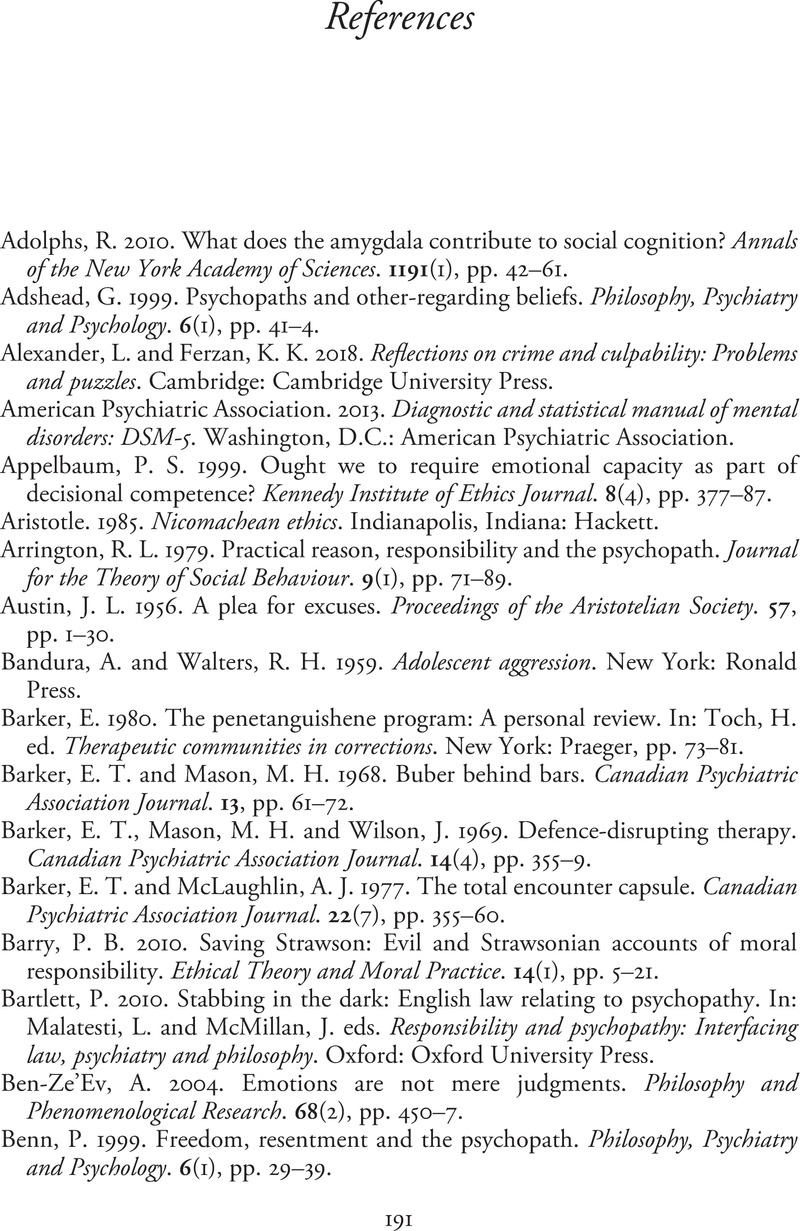Book contents
- Moral Responsibility and the Psychopath
- Moral Responsibility and the Psychopath
- Copyright page
- Dedication
- Contents
- Acknowledgements
- Introduction
- Chapter 1 Moral Responsibility
- Chapter 2 Psychopathy
- Chapter 3 Psychopathy and Moral Responsibility
- Chapter 4 Emotions and Value
- Chapter 5 Empathy and Moral Development
- Chapter 6 Psychopathy in the Criminal Law
- Conclusions
- References
- Index
- References
References
Published online by Cambridge University Press: 27 August 2021
- Moral Responsibility and the Psychopath
- Moral Responsibility and the Psychopath
- Copyright page
- Dedication
- Contents
- Acknowledgements
- Introduction
- Chapter 1 Moral Responsibility
- Chapter 2 Psychopathy
- Chapter 3 Psychopathy and Moral Responsibility
- Chapter 4 Emotions and Value
- Chapter 5 Empathy and Moral Development
- Chapter 6 Psychopathy in the Criminal Law
- Conclusions
- References
- Index
- References
Summary

- Type
- Chapter
- Information
- Moral Responsibility and the PsychopathThe Value of Others, pp. 191 - 207Publisher: Cambridge University PressPrint publication year: 2021

